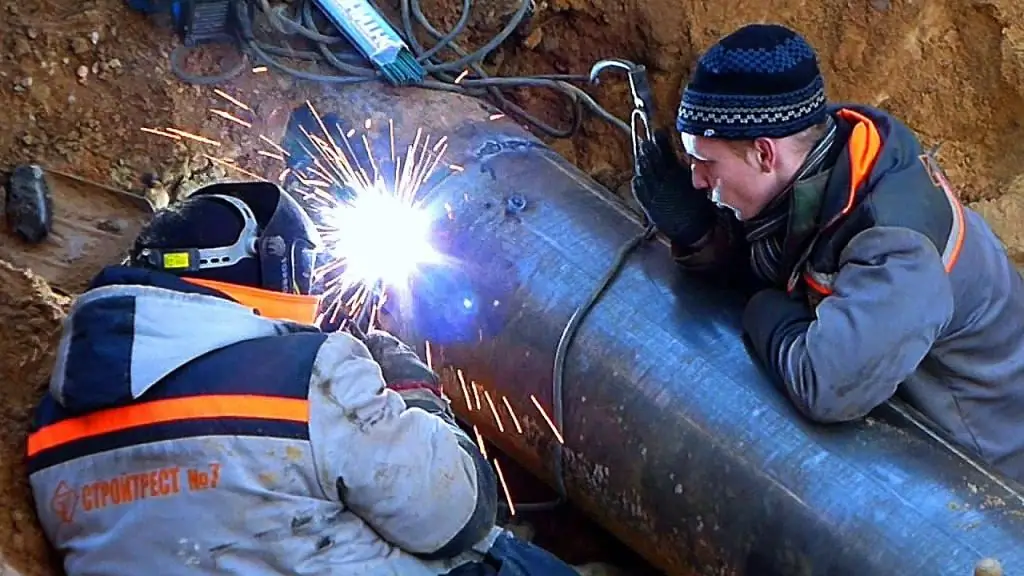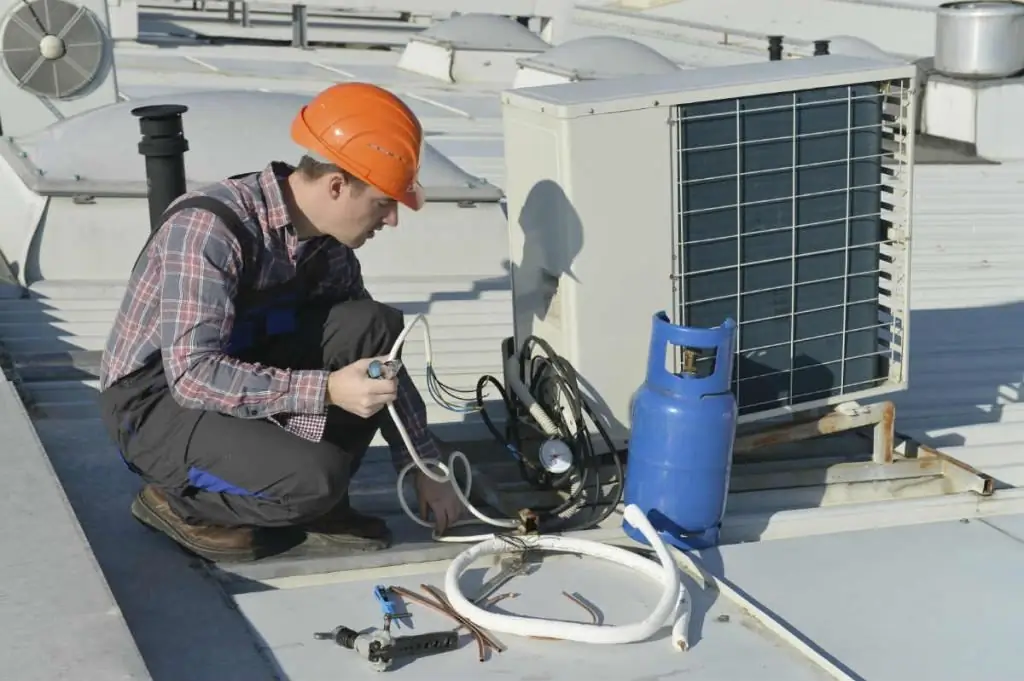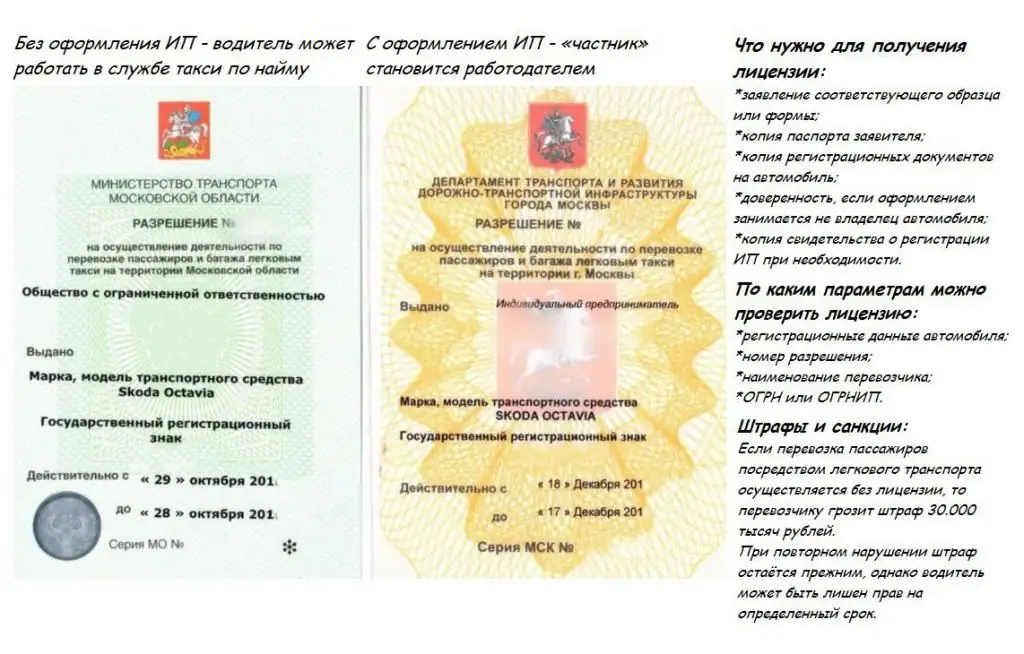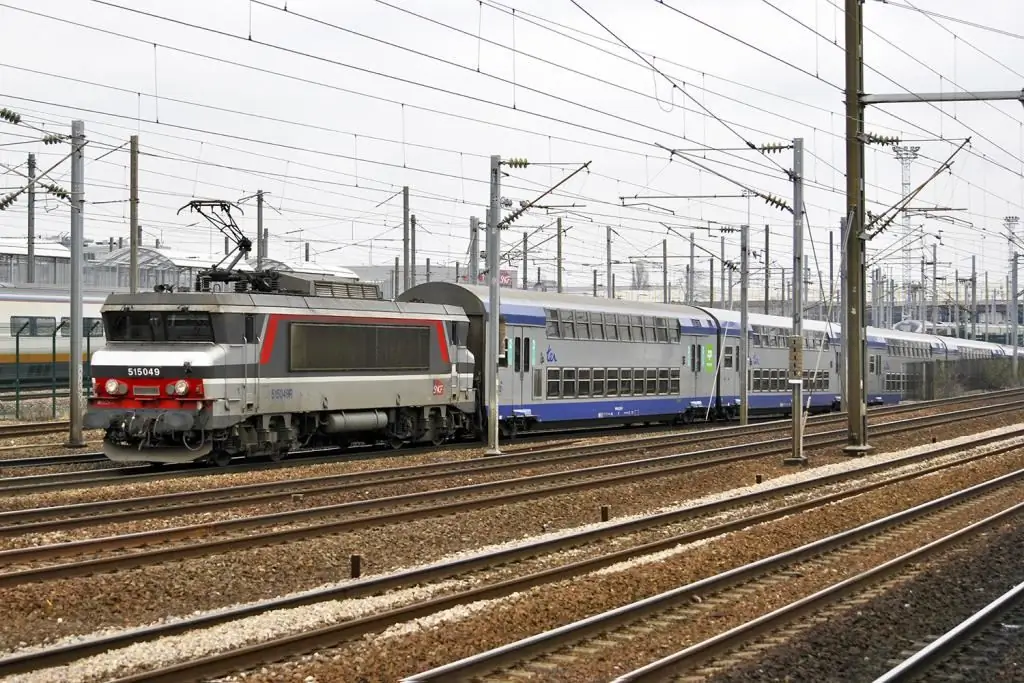2026 Author: Howard Calhoun | [email protected]. Last modified: 2025-01-24 13:10:30
The current regulation of negotiations during shunting work replaced the outdated regulation (from 1999) and was put into effect by order of the Minister of Railways of September 26, 2003 Morozov. In accordance with the current legislation, the heads of the railway departments of the Russian Federation, as well as the heads of the railway, are required to bring all official documentation to the corresponding new regulation. Deputy chiefs of railways are required to monitor the implementation of the regulations by employees and employees.

Regulations for negotiations during shunting work: general provisions
The mentioned document determines the sequence of actions and negotiations of the train crew (the driver and his assistant) or another railway vehicle, as well as the procedure for radio communications between the train crew and transport staff. Negotiations are carried out during shunting operations at the station and during the movement of the train in transit through the transport hub.
Fulfillment of all provisions of the Regulations is strictly mandatoryfor all employees of the railway, whose activities are related to organizational work and ensuring the safe operation of the transport sector.

General provisions on shunting operations
Any maneuver, both within the railway station and outside it, must be carried out according to a pre-planned plan. The supply of wagons and the formation of trains, transshipment of goods and embarkation (disembarkation) of passengers are planned by the relevant logistics departments of the railway. There is a certain procedure for shunting work that cannot be violated and is mandatory for all officials and employees of the railway.
Large railway junctions are divided into areas, which are assigned shunting locomotives. These tractors must be in perfect and technically sound condition, with working signal and marker lights, with a radio station.
Practically the entire network of railways of the Russian Federation has been modernized, the switches are mainly switched by the operator from the centralized control panel in automatic mode. However, at some outlying stations, train traffic is still regulated by an officer on duty who manually switches switches. Before changing the direction of the road, the responsible officer must make sure that the path is not occupied by another train. Failure to take precautions could lead to disaster and human casu alties.
Responsibility for planning shunting work rests with the station duty officer. On thehe, as well as the driver and his assistant, are responsible for carrying out the work and ensuring the uninterrupted movement of trains.
When visibility is limited by poor weather conditions, all maneuvers must be carried out with extreme caution and the increased attention of all employees without exception.
The work of all auxiliary transport is supervised by the head of the relevant service. Any movement of such locomotives must be coordinated with the dispatcher and the station attendant.
Relevant teams are involved in the work on the composition of cars and the connection of communications (including brake hoses). But the connection and disconnection of communications to the locomotive is the responsibility of the crew (team) of the tractor.

Management of shunting operations
The right to give an order (instruction) to carry out shunting work has only one person - the duty officer at the railway station. In some cases (if there is an appropriate order from the higher management), the shunting dispatcher or the duty officer of the sorting department may be given the right to give such orders.
The works themselves are carried out by the compiler. At many major railway junctions, an assistant is allocated to the compiler. This allows you to more quickly form trains and minimize unwanted downtime of rolling stock.
There are often situations when, during maneuvers, for one reason or another, you have to deviate from a pre-planned plan. After all, circumstances in real life are very different. In this case, all employees and participants in this complex process should be immediately informed about the changes made. History knows many cases when the arbitrariness of workers on the ground turned into death of people and major accidents.
Any movements of the locomotive performing shunting operations are allowed only with a direct indication of the station duty officer. Moreover, the officer on duty, before giving permission for movement, is obliged to coordinate all actions with the officer on duty of the station to which the train is sent.
Before taking up duty, the compiler is obliged to familiarize himself with the arrangement of the rolling stock on the section of the track entrusted to him and listen to his shift, personally verify the reliability of the fastening of the trains. In any case, even if everything is perfect, the compiler is obliged to report the situation to the duty officer at the railway station.
The employee in charge of the shunting work on the railway, before taking any action, is obliged to personally verify that the employees involved in the work are in full force at the post. Also, the manager must familiarize all the personnel who are planned to be involved with a detailed plan for the upcoming work, personally make sure that there are no obstacles to the movement of the trains.
Responsibilities of shunting supervisor:
- early signals and instructions to ensure safety and work efficiency;
- control and check the preparation of the tracks (timeliness and correctnessswitches), signaling by other railway employees involved in the operation;
- when docking cars, must be on a special step (platform for crossing) of the outer car;
- in the event that it is not possible to be on the site, must accompany the movement of the train on foot;
- should take additional safety measures in bad weather (special audio and visual signals during shunting).

Rules for docking and securing wagons
When placing trains on railway tracks, they must be placed within the established boundaries, which are marked with special pillars. To prevent arbitrary rolling of cars that stand in the way without a locomotive, they must be fixed with special locking devices (in the service personnel's slang - "shoes").
All wagons that are on the tracks and are not involved in loading and unloading must be locked.
If it is supposed to put cars on a long-term parking, then the angle of inclination of the tracks allocated for such parking cannot exceed 25 ten-thousandths of one degree. Moreover, such a path should be isolated from the main routes. To fix the wagons, shoes are used, on which the wheels roll.

Speed modes of maneuvers
Speed during shunting work is strictly regulated. The driver is allowed to develophigh speed (25, 40 or 60 kilometers per hour) only if the station dispatcher gave permission and confirmed the information that the tracks were clear. If the crew of a shunting train does not have information about the clearness of the tracks, then any, even the most insignificant, action must be carried out with extreme caution. In this case, the speed should be minimal in order to be able to stop at any time with a minimum braking distance.
The speed of 60 kilometers per hour is allowed to be developed by single locomotives when driving on free tracks and with a working braking system. Moreover, the locomotive must move ahead of the cars (pull them along). If the locomotive pushes the cars, then the speed is limited to 25 kilometers per hour (and this is provided that the train moves on free tracks).
In cases where there are people in the cars, or oversized cargo is being transported, the permissible speed limit is 15 kilometers per hour.
And, finally, if a jerky maneuver is carried out, then the speed of the locomotive should not exceed five kilometers per hour. At the same time, when a locomotive approaches the cars for the purpose of docking, it is not allowed to reach a speed of more than three kilometers per hour.
Negotiations and actions of the crew before starting to move
Before the train leaves the station (with an enabling signal from the railway traffic light), the driver and his assistant are obliged, in accordance with the Regulations, to conduct a dialogue with the employees of the station services regarding the readiness and absence of obstacles for movementcomposition. Moreover, the dialogue should take place in any case. In this case, it does not matter at all whether shunting work is performed at the stations, or whether the train must proceed in transit without stopping at high speed.
In the event that cars were attached or disconnected to the train at the station, then before the train starts moving, the driver and his assistant must conduct a dialogue between themselves, during which they inform each other about the presence of all necessary documentation and warning form. In addition, the driver must make sure that the mentioned documentation is available, and the assistant is obliged to provide it to his boss. During this dialogue, in accordance with the instructions for the movement of trains and shunting work, the driver and his deputy (assistant driver) are also required to inform each other about the serviceability of the devices that ensure the safe operation of the equipment, as well as about the correct operation of the radio station, about the position of the handbrake, about the availability of documentation confirming the results of tests of the brake system of the train and indicating its full serviceability, about the correspondence of the numbering of cars stated in the travel documentation, about the permitted speed throughout the entire upcoming section of the track.
As soon as the train started moving, the driver and assistant driver are obliged to visually inspect the train itself and the road situation through open windows for signals prohibiting further movement, as well as the state of the train itself. In accordance with the current rules, when performing shunting work, it is allowedlook through rear-view mirrors, do not open windows or look out of them.
In addition, the assistant must control the correct preparation of the path by the station services. When the assistant personally makes sure that the train route is laid correctly, he is obliged to report this to the driver. The latter, in turn, is obliged to double-check the information received from the assistant and confirm receipt of the information.

Negotiations of the crew while the train is moving
After the train passes the station, the assistant without fail informs the driver about the speed (actual and set) on a particular stage. If any speed limits (both temporary and permanent) are set on the section of the track under consideration, then the assistant driver of the locomotive is obliged to inform the driver about these circumstances.
The rules for the movement of trains only at first glance seem extremely simple. In fact, the movement of the composition is regulated by many road signs and traffic lights. The assistant must immediately inform the driver about all circumstances and changes in traffic, as well as about atypical signs. This is required by the job description and regulations of negotiations during shunting work. The driver confirms the acceptance and verification of the information by repeating the words of his assistant.
If the train is approaching a section of the track on which the brake system of the train is to be tested, then the assistant is obliged to inform his boss about the upcoming test. At the same time, heindicates the required test parameters: speed before braking, kilometer traveled and so on.
Among other things, the train driver must be informed by his assistant about the approach of the train to intersections with highways (crossings), to places with speed limits. Moreover, when the train overcomes sections of the track that are subject to speed limiting signs, the assistant driver, in accordance with generally accepted international rules for train traffic, must be directly at his workplace.
External inspection of the train through viewing windows or rear-view mirrors should be carried out not only during the start of the train. The driver and his assistant are required to carry out such an inspection even when overcoming curved sections of the train route.
When a train is moving along an oncoming railway line, the assistant driver must also inspect the oncoming train for malfunctions and all kinds of violations. If any are found, then the driver of the oncoming train is warned by radio about the presence of malfunctions and irregularities in the work of the train entrusted to him.
If a traffic light with a burning yellow signal light is encountered in the direction of travel, the assistant driver reports this and indicates the permissible speed of the train.
The driver's assistant cannot leave the locomotive control cabin during the movement of the train through the station, at the moments of speed reduction (when the train approaches the corresponding traffic light), when passingbuilding structures (primarily tunnels and railway bridges).

Actions and negotiations of the train crew during shunting work
In accordance with the Rules of negotiations during shunting work, the driver is obliged to report and coordinate with his assistant all actions and the plan of maneuvers. It is allowed to carry out any actions only with the appropriate order of the duty officer of the railway station.
Before proceeding with the maneuver, the assistant should remind the driver to check the operation and reliability of the auxiliary braking system. It is the auxiliary brake of the train that is used in the implementation of shunting work on the railway. The test precedes the start of the maneuver. The speed of shunting should not exceed five kilometers.
Rules for negotiating via a train radio station
If necessary, contact a railway employee by radio, pronounce his position. If the answer is not followed, then you need to repeat the call several times. If it is necessary to inform all participants at the same time, then appeals are made directly to the designated group of persons. That is, the command should follow: “Attention everyone !!!”
The contacted person must introduce himself and confirm that he is in touch. In any case, the participants in the conversation must introduce themselves and state their position.
In response, the person who initiated the appeal also introduces himself (names hisposition and surname) and reproduces the text of the appeal or order (depending on the specific case).
The operation of the radio communication system is checked without fail before each departure of the train from the railway station. Shunting work is not allowed to be carried out in case of a violation in the operation of the radio unit. This could lead to an accident and death.
Submission of a signal about the occurrence of an accident or malfunction in the control system
The signal of an accident or a significant malfunction of the locomotive controls, serving as the word “Attention! Everyone!” This signal is authorized to be sent by both the driver and his deputy. All railway personnel (including station attendants and drivers of other trains) at this signal should immediately stop talking on the radio and listen carefully to the appeal and take measures (if possible) to eliminate the accident and minimize its consequences.
This form is used in case of detection of foreign objects and damage to the railway track, in the event of a breakdown or malfunction of the brake system of the train, as well as in the event of a stop of the train as a result of a derailment.
Recommended:
Safety precautions for a welder during work: standards, rules and instructions

Welder is not an easy profession, but very necessary and in demand. However, we all know that this type of activity is not the safest. Today we will look at the safety precautions that professionals must follow in order to avoid accidents while working
Air conditioning system maintenance: choosing a company, concluding a contract, rules for registration, act of work performed, maintenance instructions, regulations and safe work

The main task of the ventilation system is to provide access and exhaust air, as well as its filtration and temperature control. In order for these tasks to be fully completed, it is necessary to install special equipment, as well as equip the blower system. Maintenance of the air conditioning and ventilation system is mandatory for both civil and industrial facilities
Movement of an employee: the order of movement, the nuances

Movement of an employee can be represented in several ways. The article describes when and how this procedure is performed. The main differences between the process and the translation are given, as well as the rules for processing the transfer
Responsibilities of the conductor: job descriptions, rights, work regulations on the route and during the train stop

The profession of a train conductor is often chosen by those who are attracted by the opportunity to travel and get new experiences. During the working shift, one has to observe a constant change of landscapes flickering outside the window. Working as a conductor is a constant interaction with people. Each trip brings new passengers. You don't have to be bored. However, when making a final decision, you need to ask what duties the conductor has to perform
What you need to work in a taxi: necessary documents and requirements, regulations and legal aspects. Feedback and advice from taxi drivers, customers and dispatchers

According to many passengers, the job of a taxi driver is the easiest. You sit, listen to pleasant music and drive back and forth. And they give you money for it. But this is only the outer side of the coin. The reverse is much less rosy. We will talk about it in this article. And we will also highlight what you need to work in a taxi

